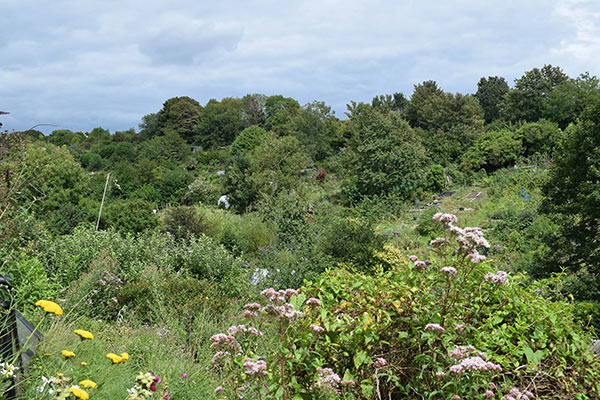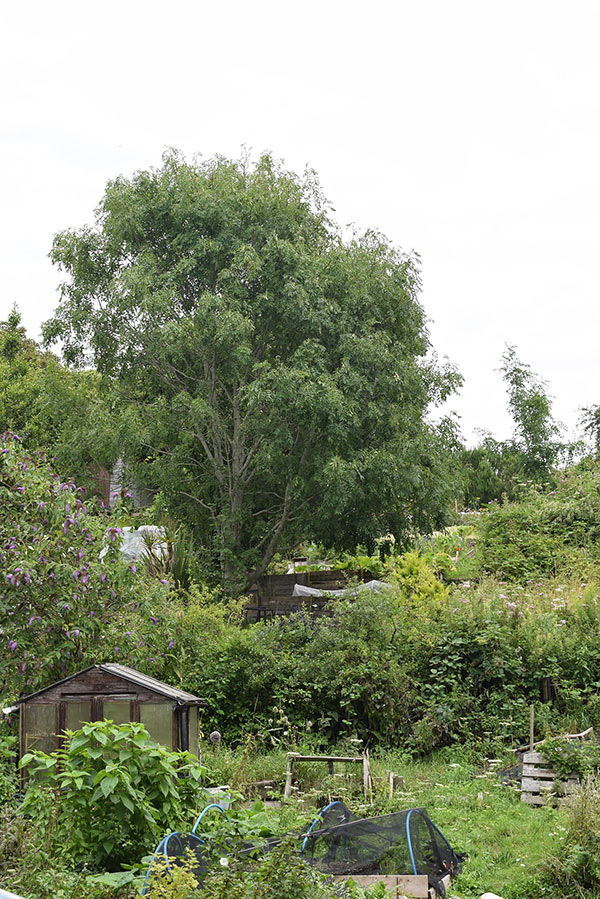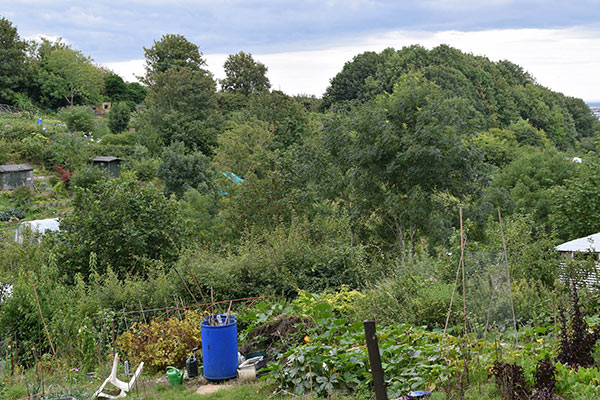Over the last 5-10 years the number of self-seeded trees on some allotment sites has increased dramatically. It is now at a point where it is getting out of control. Central government cuts have led to cuts in resources for the allotment service that’s true, however, in our opinion, keeping trees under control should be a baseline of allotment inspections and management. Some areas on some sites are now reverting to woodland and the plots are becoming close to unusable.

Allotments or downland woods?
This is Roedale Valley Allotments which has one of the largest waiting lists in the city.
This problem is much worse on sites which are adjacent to woodland (Roedale Valley is particularly bad) but there are issues across the city.
Once a tree becomes established it can put large areas into shade and its roots can spread over very large areas making growing near the tree impossible.
They will suck much of the water and nutrients out of the ground. Every year it will also drop many seeds adding to the problem.
The larger the trees get the more expensive they are to remove. Many are now so big that expensive professional kit and expertise will be needed. But It’s no longer just about felling the trees. There will be huge stumps left and these will sprout quickly again unless removed and that is another added difficulty and expense. What was a smallish problem 7 or 8 years ago is now a major problem which will cost a lot more to sort out. Allowing this situation to continue will increase the cost of sorting it out even more and that is a big worry.

Statutory allotments are protected as long as they are being used to grow food. If sites become so overgrown with trees that the food growing is no longer the prime land use, I fear that we could be putting sites at risk. As BHAF our prime objective is to protect our allotment sites so we need to speak up about this issue. I know how strongly people feel about trees and how many may object to the idea of felling them but I feel we need to get as many people as possible to realise it needs to be done and try and get the Council to do it.
 some sites are reverting to woodland
some sites are reverting to woodland
I want to make it clear that the species we are talking about are mostly sycamore and ash. These trees are prolific self seeders and they grow very quickly. In terms of biodiversity, ash and especially sycamore support much less insect biodiversity than many other trees. In fact, where these trees are on the borders of plots or the haulage way removing them and replanting with smaller easier to handle species like Hawthorn or Blackthorn would massively increase biodiversity.
Where trees are growing on actual plots, then again, a well-maintained plot with a biodiversity area and pollinator friendly plants would be much more beneficial to the environment. The biodiversity argument for keeping these trees on allotment sites doesn’t hold up. The best solution would be to chop the sycamore and ash and then use a woodchipper to provide barrels and barrels of woodchip mulch to put on the plots.
The issue is the amount of land which is becoming unusable. There are currently nearly 70 plots across the city listed as officially unlettable but I can see many more on the way. We need to wake up and address the problem now before the trees get even larger and numerous and even more expensive to remove at which point it will be too late.
Its clear that the Council has not been enforcing the allotment rules regarding trees for some time! It is true that many plot holders took on their plots and inherited substantial trees already growing on them. It should not be these plot holders resposibility to remove them.
If you have concerns about the number and size of trees on our allotment sites and think that the Council should be addressing the problem then please either email one of the councillors on the Environment Committee or your local councillor.